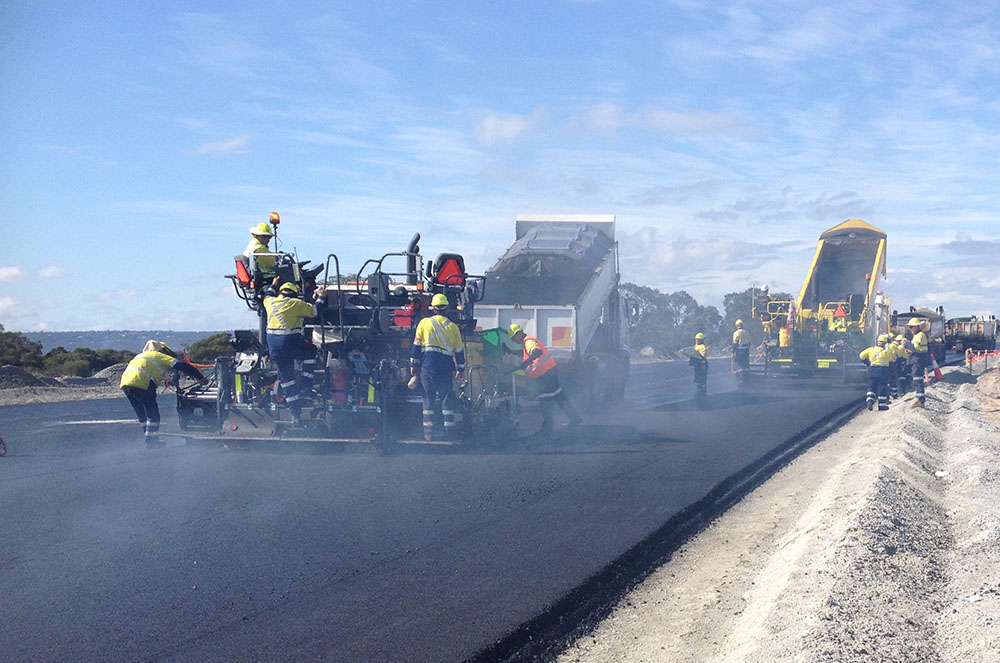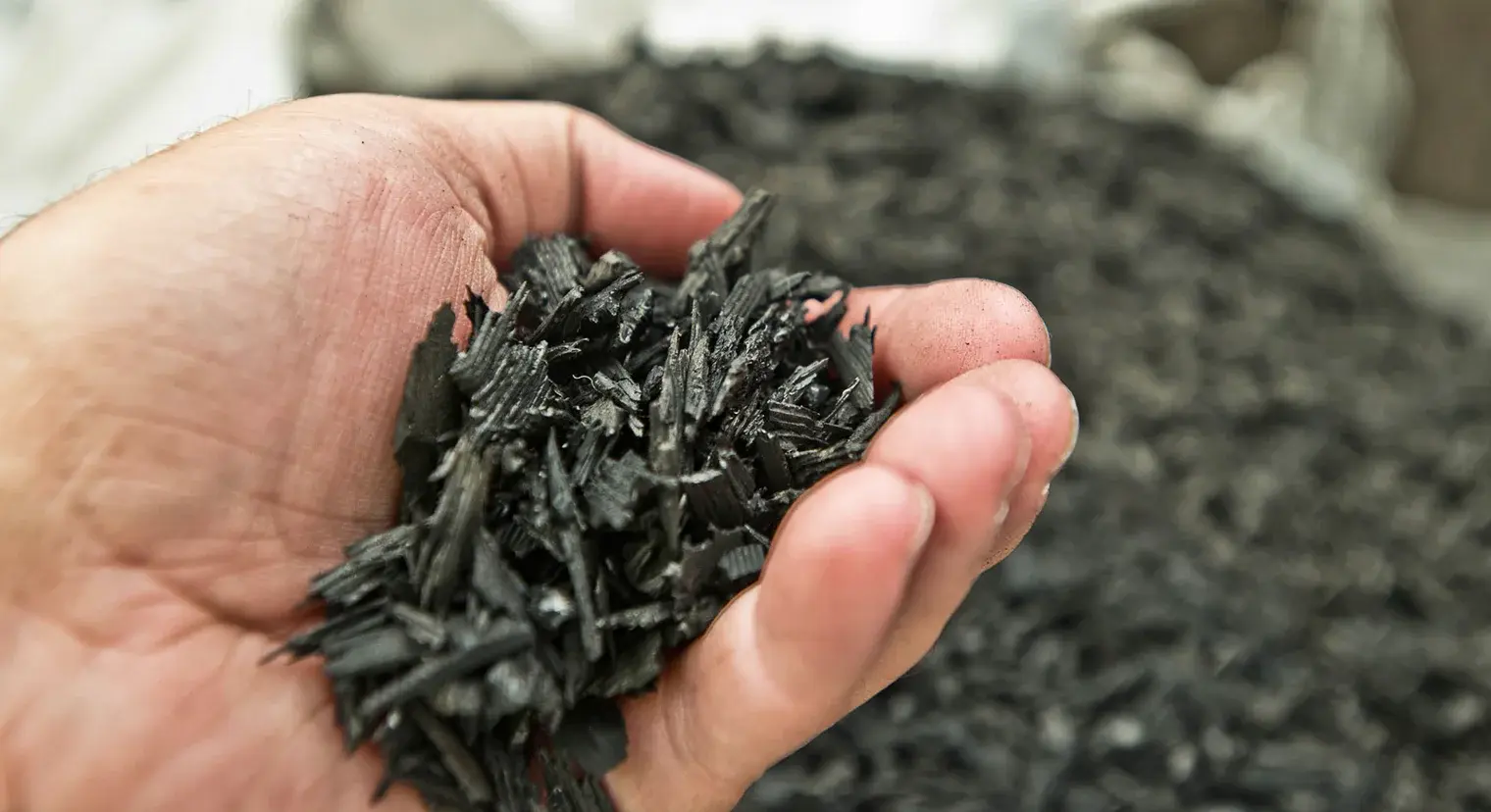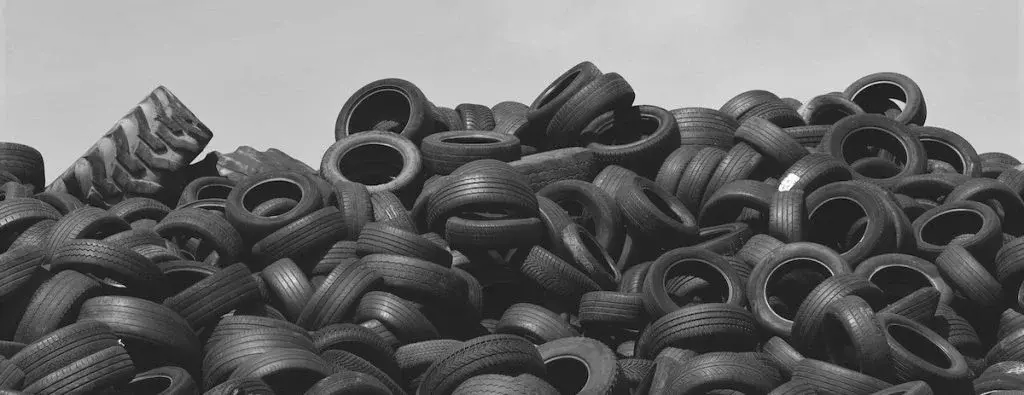 Crumb Rubber Modified Bitumen
Crumb Rubber Modified Bitumen
WHAT IS CRUMB RUBBER MODIFIED BITUMEN?
CRMB is also known as rubberized asphalt, rubberized bitumen, rubberized asphalt concrete, and asphalt-rubber. A bituminous binder is the most common material which is used in road construction. Since the population is very high in India. The use of vehicles has also increased to a great extent leading to heavy pressure on the roads making them less sustainable. For such a huge population and developing India, the process of road building also needs to change.
Crumb Rubber Modified Bitumen (CRMB) is made by the amalgamation of crumb rubber modifier and the chosen bitumen grade. The modifier works as an agent that strengthens the binder from the occurrence of any deformation when trying to maintain during low temperature, fatigue or thermal issues. CRMB is beneficial as it increases the life of a road by 1.5 to 2 times as to using a normal bitumen modifier. Our CRMB provides some unique properties different from bitumen binders like the strong adhesion reduces cracking, deformation, etc. It increases the stability of the material, homogeneity throughout the supply chain.
Crumb Rubber Modified Bitumen is Conventional Bitumen with treated Crumb Rubber Additive at high temperature which results in:
- Lower susceptibility to temp. variation
- Higher resistance to deformation at high temperature
- Better Age Resistance Properties
- .Higher Fatigue Life of Mixes
- Better Adhesion Properties
CRMB (Crumb Rubber Modified Bitumen/Binder) is useful in hot climate due to fatigue life and deformation. Looking at the vast network of roads in Middle East/GCC Bituminous binders is the common material in use. In recent years, the increased number of vehicles on the road and the heavy pressure from the heavy vehicles hampering the road situation that directing towards modifying Bituminous in Middle East/GCC. The modified bituminous like polymer modified bituminous and Crumb Rubber Modified Bitumen are useful and having good impact towards lifeline of the Middle East/GCC roads.
CRMB otherwise known as Asphalt-Rubber Binder as it introduced after polymer modified bitumen and available with various features:
- Resistance to temperature
- Available with enhanced stability
- With fatigue life
- Prevention from rutting
- Water resistance and Better Adhesion
- The resistance to fatigue is high.
- It is very cost effective.
- Strong resistance to thermal and changing temperature cracking.
- It gives a good experience in extreme climates.
- Aging process slows down by mixing rubber with bitumen leading to increased lifespan.
- It gives protection from water damage due to hard grade of asphalt formed.
WHAT IS CRUMB RUBBER AND ITS USE IN RUBBER MODIFIED ASPHALT
The transformation of waste into wealth to improve the sustainability of the construction industry has resulted in increased research and implementation of new innovations. One example of this is the utilisation of crumb rubber in new road construction. This versatile material, originating from end-of-life tyres, has found its way into various applications, impacting industries across the globe. Its most notable use is in rubber modified asphalt for road construction, promising a magnitude of benefits ranging from environmental to economic.
TYPES OF CRUMB RUBBER MODIFIED BITUMEN
Three (3) different types of CRMB available in market based on the softening point of each type using the ring and ball method as: CRMB 60, CRMB 55 and CRMB 50.
As per the specification all these 3 different types of Bitumen meant for different roads like CRMB 60 is preferable in hot climate, CRMB 55 is suitable for moderate climate and CRMB 50 is recommended for cold climate. CRMB is most useful Bitumen for Middle East/GCC busy roads, intersecting roads, roads with heavy traffic, heavy vehicle riding roads, bridge, etc. It is one of the best solutions to increase longevity of the roads in Middle East/GCC.
CRMB 60: Tailored for warm climates, this grade blends bitumen with crumb rubber to enhance the elasticity of bitumen and increase its softening point, making it more resistant to high temperatures. It consequently reduces the risk of rutting and heat-related damage to the road surface.
CRMB 55: This grade is suitable for general climates where temperatures fluctuate considerably throughout the year. It ensures optimal performance under a range of temperatures and is ideal for a variety of road construction projects, including highways, urban roads, and residential streets.
CRMB 50: For colder climates with frequent sub-zero temperatures, CRMB 50 is the preferred choice. This formulation maintains flexibility at lower temperatures, thereby reducing the likelihood of thermal contraction-induced cracking. The added crumb rubber enhances the bitumen’s resistance to cold-temperature cracking and thermal fatigue.
CRMB IS AVAILABLE IN DIFFERENT TYPES BASED ON THE RUBBER CONTENT:
Type A CRMB: Comprising 18-22% rubber, it’s produced by adding dry crumb rubber to hot bitumen. This type is ideal for high-traffic roads and highways, where the pavement must withstand heavy loads and extreme weather conditions.
Type B CRMB: Contains 12-16% rubber and is produced by integrating wet crumb rubber with hot bitumen. It’s suitable for low-traffic roads and pavements, where the pavement must endure moderate loads and weather conditions.
Type C CRMB: Comprising 6-10% rubber, this type is generated by adding wet crumb rubber to cold bitumen. It’s appropriate for thin pavements such as bike lanes and footpaths, where the pavement needs to be flexible and resilient
THE CRUMB RUBBER REVOLUTION
Crumb rubber represents a leap forward in environmental practice. It’s produced through an ambient grinding or cryogenic process, where discarded tyres are broken down into granules. This eco-friendly material is not only preventing the accumulation of tyres in landfills but also propelling a wave of sustainable practices globally.
The application of crumb rubber isn’t limited to a single industry. It’s a testament to recycling’s potential, contributing to products in sports, automotive, construction, and more. However, its within the domain of rubber modified asphalt that we will focus.
WHAT IS RUBBER MODIFIED ASPHALT?
 Rubber modified asphalt is a composite of traditional asphalt and crumb rubber. This unique blend enhances the asphalts durability, noise absorption, and resistance to weather-related stress. Roads built using rubber modified asphalt are not only quieter and more comfortable to drive on but also significantly safer, thanks to the materials increased flexibility and skid resistance.
Rubber modified asphalt is a composite of traditional asphalt and crumb rubber. This unique blend enhances the asphalts durability, noise absorption, and resistance to weather-related stress. Roads built using rubber modified asphalt are not only quieter and more comfortable to drive on but also significantly safer, thanks to the materials increased flexibility and skid resistance.
Furthermore, the environmental implications of using rubberised asphalt are profound. Every mile paved with this new material uses thousands of scrap tyres, essentially turning a global waste problem into a beneficial solution. It represents what can be achieved when innovation meets responsibility.
Adopting crumb rubber goes beyond environmental benefits; it’s also a financially sound decision. Though the initial investment may be higher, long-term savings can be considered. Reduced maintenance costs, longer road lifespans, and less frequent replacements make it a cost-effective option for governments and contractors worldwide.
WHY TO CHOOSE UAE CRUMB MODIFIED BITUMEN ?
CRMB modifier improves vital features of asphalt by adding a Tire and Milking bottles (TMB)-super feature with conventional asphalt which provides number advantages to use CRMB:
- Increases Elastic nature , which increases resistance of road in cold climatic areas and recover the road from cracking.
- Increases softening property to increase the longevity of road in hot climatic areas.
- Hard grade of asphalt due to lower penetration which gives strength to the road and rescues from water damage.
- Increasing age resistance by adding rubber to Bitumen because the ageing process slows down after adding rubber into Bitumen.
- Better strength, long life and stability due to improved adhesion.
- The road life of rubber Bitumen is 2 to 3 times more than the normal bitumen road.
In conclusion, it is very necessary to change Bitumen roads to CRMB for higher resistance, smooth drive, comfort and safety. Choose the best CRMB manufacturer and get the product at an affordable price with not less of 15-25% of a net cost saving.
THE ART AND SCIENCE OF CRMB
NAVIGATING THE PRODUCTION PROCESS
The production process of Crumb Rubber Modified Bitumen (CRMB) or rubberized asphalt involves a series of well-defined stages, resulting in a product that optimally combines the advantageous properties of bitumen and crumb rubber.
HERE IS A GENERALIZED PROCESS:
Crumb Rubber Production: This is the initial phase where waste tires are mechanically ground into fine particles, creating the crumb rubber. The size of these particles typically ranges between 0.6 to 0.8 mm.
Preliminary Blending: The crumb rubber is added to hot bitumen, usually at temperatures around 180°C. The high temperature is necessary for the rubber particles to swell and absorb the bitumen.
Digestion Phase: The mixture is kept at the high temperature for a specific period, known as the digestion or reaction time. This period can vary between 1 to 2 hours and allows for the complete assimilation of the crumb rubber into the bitumen. During this process, the rubber particles swell, soften, and partially dissolve, creating a thicker, more viscous material.
Final Blend: Following the digestion phase, the blend is stirred thoroughly to ensure the crumb rubber is evenly dispersed within the bitumen. This can be achieved by using high-speed shear mills.
Filtration and Storage: The CRMB is filtered to remove any large, undissolved rubber particles. It is then stored at high temperatures to prevent separation before use.
Use in Asphalt Mixture: The final CRMB product is mixed with aggregate material (stones, sand, etc.) to create the asphalt mixture that is used for paving.
Please note that the specifics of the production process may vary depending on the required properties of the CRMB, local regulations, and the technology available. Regardless of these factors, the goal is always to produce a superior pavement binder that can resist deformation, cracking, and weathering more effectively than conventional bitumen.
GLOBAL IMPACT OF CRUMB RUBBER
The utilisation of crumb rubber in road construction is gaining momentum around the world. Various countries are experiencing the benefits firsthand, adapting the technology to suit local conditions and requirements. From busy highways in urban areas to rural roads, rubber modified asphalt’s global footprint is expanding, backed by governmental policies and infrastructural investments focused on sustainable, long-lasting roadways.
THE FUTURE OF CRUMB RUBBER
The crumb rubber industry is poised for growth, with rubber modified asphalt leading the charge. As more territories embrace this technology, research into enhancing the quality of crumb rubber and its applications continues to escalate. The industry’s future seems geared towards broader adoption and innovative methodologies, potentially branching into different sectors seeking sustainable alternatives.
The journey towards sustainable global infrastructure is ever-evolving, with innovative solutions and industry advancements surfacing regularly. Crumb rubber and rubberised asphalt represent just the tip of the iceberg in our pursuit of a greener tomorrow.
BENEFITS OF OPTING FOR CRMB INSTEAD OF TRADITIONAL BITUMEN
| Traditional Bitumen | Crumb Rubber Modified Bitumen (CRMB) |
| 6 to 8 cm Topcoat Asphalt Thickness | 5 to 7 cm Topcoat Asphalt Thickness |
| 1 to 5 Years Road Lifetime | 5 to 15 Years Road Lifetime |
| High Maintenance Cost | Extremely Low Maintenance Cost |
| Low Stability Under High Loads | Very High Stability Under High Loads |
| Extremely Low Flexibility | Extremely High Flexibility |
| Moderate Skid Resistance | High Skid Resistance |
| Low Fatigue Resistance | High Fatigue Resistance |
| Low Elastic Recovery Causes Asphalt Deformation | High Elastic Recovery Resists Asphalt Deformation |
| Moderate Resistance to High and Low Temperature | High Resistant to Extreme High and Low Temperature |
| Low UV Protection Causes Early Aging | High UV Protection Increases Lifetime |
| Moderate Car Cabin Noise Penetration | Low Car Cabin Noise Penetration(Up to 4dB) |
| NON ECONOMICAL | HIGHLY ECONOMICAL |
TECHNICAL DATA SHEET OF CRUMB MODIFIED BITUMEN
NO PROPERTIES CRMB 50 CRMB 55 CRMB 60 ASTM STANDARDS
1 Penetration at 25 ֯C, 1/10mm, 100g, 5 sec < 70 < 60 < 50 D5
2 Softening Point, (R&B), ֯C, Min 50 55 60 D36
3 Elastic Recovery at 15 ֯C ,%, Min 50 50 50 D6084
4 Flash point , COC, ֯C , Min 220 220 220 D92
5 Separation, Difference in Softening Point,(R&B), ֯C, Max 4 4 4 –
6 Viscosity at 150 ֯C, Poises 1-3 2-6 3-9 D2170/D4402
Thin Film Oven Test & Test on Residue
7a Loss in Mass, %, Max 1.0 1.0 1.0 D6
7b Reduction in Penetration of residue at 25 ֯C , 100g, 5s, %,Max 40 40 40 D5
7c Increase in Softening Point, ֯C, Max 7 6 5 D36
7d Elastic Recovery at 25 ֯C, %, Min 35 35 35 D6085
For more information, please Contact our Sales Team.


